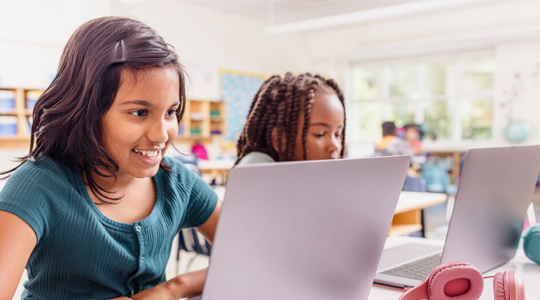
The Next Generation Science Standards (NGSS) specifies a number of skills that students should learn. Among those are the abilities to work as a team, collaborate, and participate in productive discourse—all important pieces of social and emotional learning.
SEL in Science: Collaboration in the Classroom
In order to collaborate, students need to not just do stuff but also really listen to each other and work as a whole team. Productive discourse lends itself well to building a community where social and emotional learning in science is supported. Sometimes, students need to argue in class, but the focus is not who’s right and who’s wrong. The focus is: How can we do a better job of what we need to do?
Encouraging Active Learning
NGSS emphasizes students need to be active, not passive, learners. It’s common even among the best science teachers to have a class in which the teacher asks questions. Everyone is sitting there, the teacher asks the question, and then the teacher expects a certain answer. Hands go up, teacher calls on a student, maybe the student gives a partial answer, and teacher bounces that to other students. Students are actively listening, but they aren’t generating their ideas.
A very different model is where the students work in small groups. They’ve got their assignment and are generating the questions and the answers. They are discussing the different points of view and having those very engaging discussions. It is much more exciting to be involved in a conversation of that sort. That’s what’s meant by productive discourse.
The Teacher’s Role
One step teachers can take is to create a classroom environment where it’s okay to talk, an aspect that lends itself to social and emotional learning. The teacher also needs to make sure that the classroom a place where it’s safe for students to disagree and where it’s clear that disagreement is really the only way to make progress. If everybody agreed, there wouldn’t be any purpose for discourse. What’s even more important is to understand what those disagreements are meant to surface differences of opinion, and have students express those differences clearly to each other and be willing to understand what the other person is trying to say.
For example, one of those skills I find to be incredibly helpful is when there’s a disagreement, the first thing you need to do—rather than just expressing your own opinion—is to say, “Here’s what I think I hear you saying. Am I correct about that?” That way, the other person feels as though he or she has been heard. That’s a hard skill to develop because people simply want to say what they think right away.
The teacher can be really, really valuable in helping students develop these capabilities—to know what it’s like to be a member of a team.
Another step a teacher can take is to give assignments where students are engaged in finding out about situations in the real world. Here is where discourse and collaboration connect to the other performance expectations. For example, in engineering, students at the high school level are expected to address global issues and essentially take them apart, and see which parts could be solved by engineers—the issue of climate change is an example. It is really valuable for students to have some hands-on experience where they see how energy is generated and to find different ways of using energy that are more efficient.
The skills of working together with other students and being able to conduct productive discourse are extremely important in the science classroom—just as important as understanding science concepts.
The views expressed in this article are those of the author and do not necessarily represent those of HMH.
***
This blog post is based on a professional development video found within HMH Into Science.
For more information on using SEL in science to reach all students, read "Integrating SEL Into the Academic Curriculum" by HMH author, Bernadine Okoro. Download the article below.

Next Generation Science Standards and logo are registered trademarks of Achieve. Neither Achieve nor the lead states and partners that developed the Next Generation Science Standards were involved in the production of, and do not endorse, this product.
This blog, originally published in 2018, has been updated for 2022.
Learn how to integrate social and emotional learning across all subject areas with our SEL curriculum.
Get our free SEL guide full of research-backed information.














